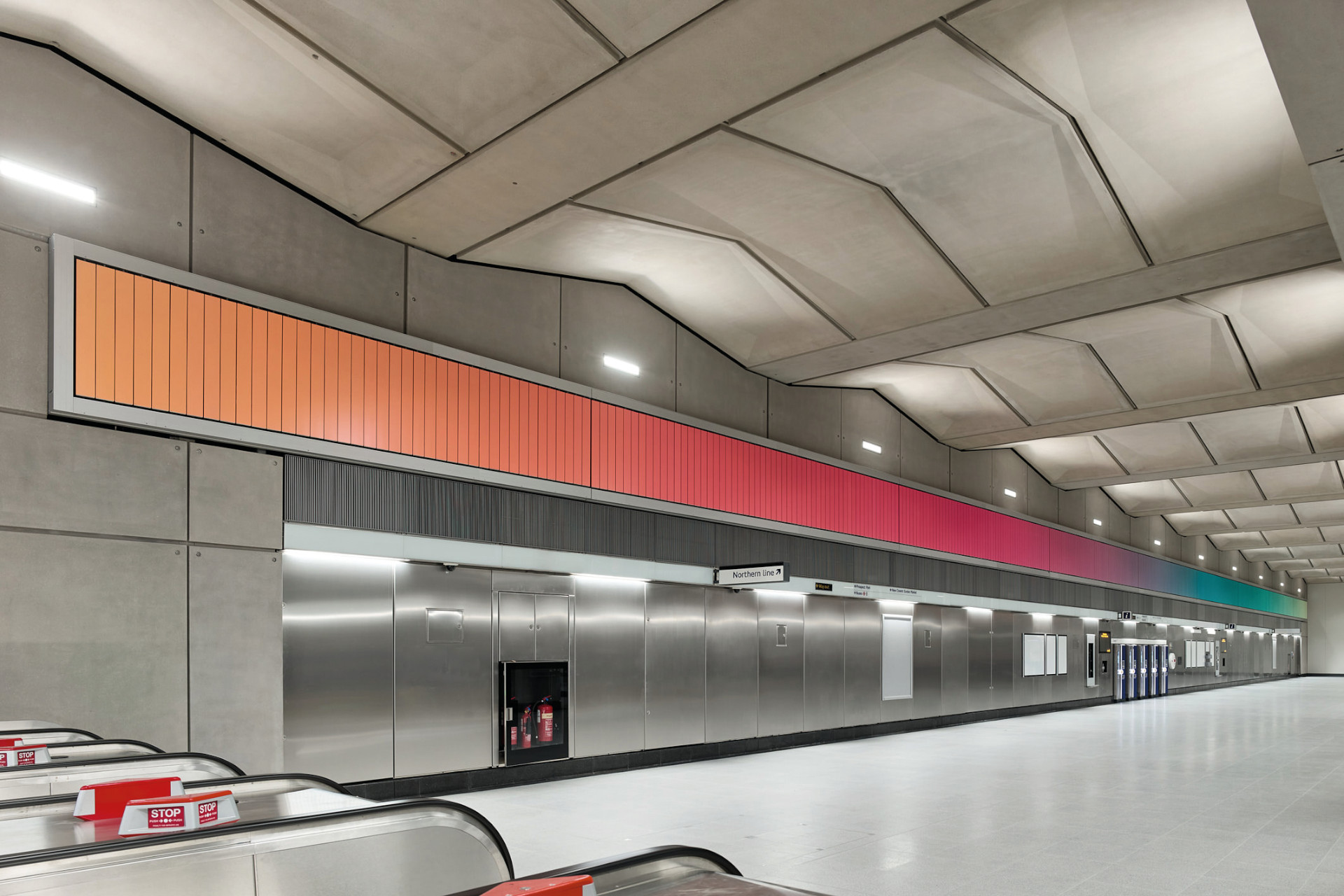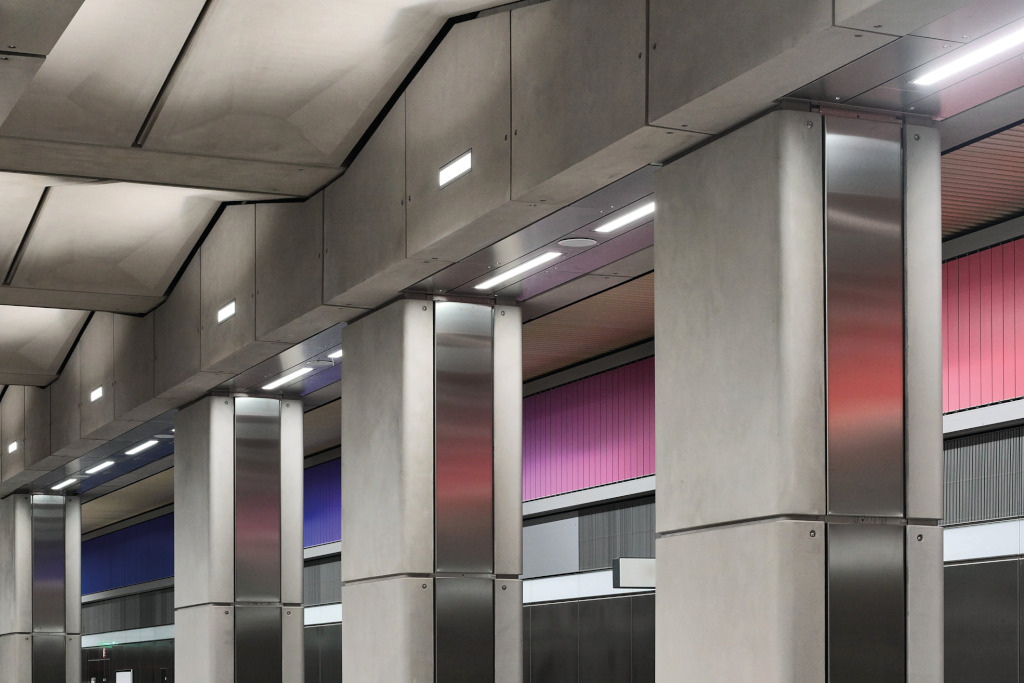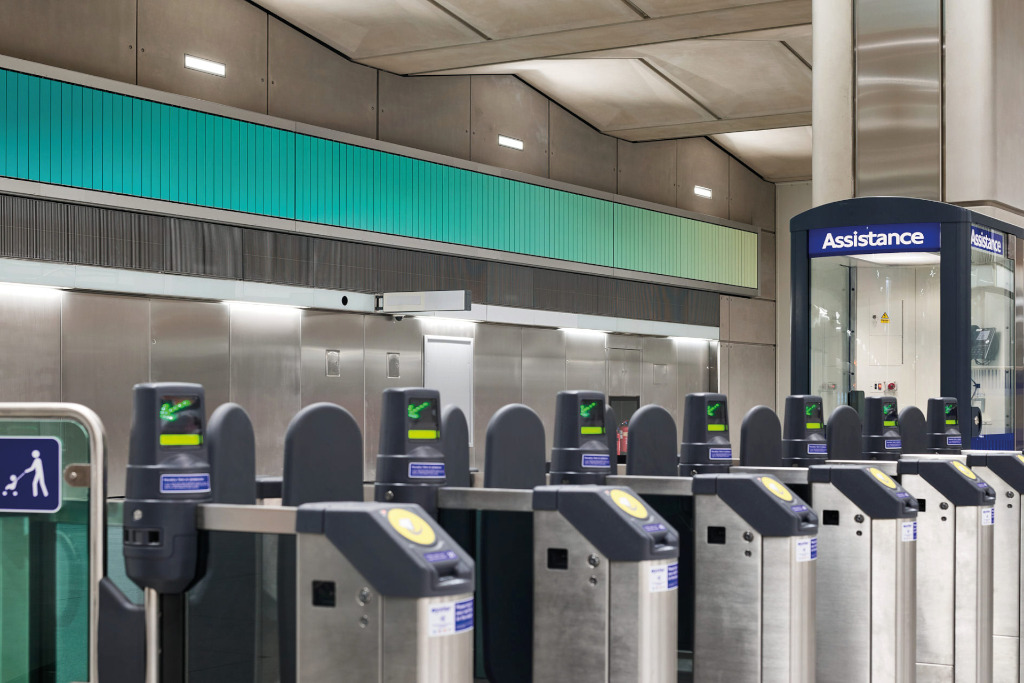The Exhibitionist: Art and the Underground
By
3 years ago
Art has always played a prevalent role in London Underground’s history

Ed Vaizey on the art brightening up London’s newest tube station.
Outdoor Art in London: A Guide
The Exhibitionist: Art and the Underground
Well, here’s something that completely passed me by. London has two new tube stations – Nine Elms and Battersea Power Station. They are extensions on the Northern Line, from Kennington, and at long last open up more of south London to the Underground network.
Of course, the opening of two new stations, even if they are the first for 20 years, shouldn’t automatically be the subject of a culture column. But that would be to ignore the fine work of art on the Underground, or indeed the tube’s long association with the arts for a century.

Sunset, Sunrise, Sunset by Alexandre da Cunha (2021)
Frank Pick, the managing director of the London Underground in the early 20th century, pioneered the concept of total design, which covered everything from the unique roundel logo, recognised all over the world, and the use of the Johnston typeface, to the suburban brick-based tube station designs of Charles Holden, through to the iconic tube map designed by Harry Beck.
The 1970s and 1980s saw a flourishing of site-specific art commissioned for individual tube stations. In 1986, for example, the sculptor Eduardo Paolozzi completed a series of glass mosaics covering almost a kilometre of walls in the Tottenham Court Road station, reflecting his interest in the local area as well as mechanisation, urbanisation, popular culture and everyday life. More recently, after the refurbishment of the station to accommodate the Elizabeth line, the acclaimed French artist Daniel Buren installed Diamonds and Circles, a colourful series of large-scale diamond and circle shapes fixed to the station’s internal glass walls.
But the tube doesn’t just commission big work. All of us are familiar with the poems on the underground, sitting between the adverts on the wall of the carriage. And a few years back the head of the Arts Council gave me one of Tracey Emin’s specially commissioned Oyster card wallets – apparently now worth a fortune, and since of course lost by me.
All of this brings me to the latest artwork to be installed, along with the new stations. Sunset, Sunrise, Sunset is by the British Brazilian artist Alexandre da Cunha; it’s more than 150m in length, and can be found in the new Battersea Power Station tube station.

Sunset, Sunrise, Sunset by Alexandre da Cunha (2021)
Charlotte Metcalf and I chatted to the artist about it on our podcast Break Out Culture, so you can learn more there. Da Cunha uses an old advertising mechanism (overtaken by digital), the rotating billboard. On either side of the ticket hall, he has used vertical panels installed above head height, which rotate at random, presenting different combinations of colours. The vertical columns not only echo the billboards, but also the vertical bars measuring electricity output that you would have found in the control room of Battersea Power Station. It’s a lovely, gentle, and very site specific work which the public will love.
The tube is noisy, dirty, hot and crowded. But Londoners, native and new, do love it. And one of the reasons is the art, subtly placed but carefully thought through, which gives our tedious journeys to work and play a little bit of interest and joy.
Image: Alexandre da Cunha
More Exhibitionist…
The Exhibitionist: Ed Vaizey on Artemisia and Art History / The Exhibitionist: Ed Vaizey on Giving the Gift of Art for Christmas / The Exhibitionist: Ed Vaizey on Artemisia and Art History



